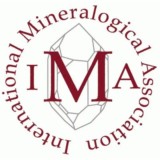How are minerals named ?
Minerals, the fundamental building blocks of rocks, play a key role in the history of the Earth and natural sciences. Their nomenclature, often complex, follows strict rules that reflect their chemical and crystallographic characteristics, and sometimes their discovery history. This article explores the criteria and methods for naming minerals.
The basics of mineralogical nomenclature
Mineral nomenclature is based primarily on principles defined by the International Mineralogical Association (IMA), which oversees the naming of new minerals. Since its inception in 1959, the IMA has been the authority on the official recognition of minerals. To be considered a new mineral, it must meet a rigorous set of criteria, including chemical composition, crystal structure, and distinct properties.

The origin of mineral names
Mineral names can come from a variety of sources :
Chemical and physical properties : Some minerals are named after their chemical properties. For example, cavansite Ca(VO)Si4O10 4H2O gets its name from its chemical composition rich in calcium, vanadium, and silicon.
Places of discovery : Many minerals are named after the place where they were first discovered. For example, franklinite was named after Franklin, New Jersey, where it was first identified.
Names in honor : Some minerals are named after people who contributed to mineralogy or the natural sciences. For example, haüyne was named after Abbé René Just Haüy, the creator of crystallography and who was a professor at the Muséum d’Histoire Naturelle in Paris.
Color and appearance : The color or appearance of a mineral can also influence its name. For example, hematite gets its name from the Greek haima, meaning “blood,” because of its red color when pulverized.
Official procedure for naming new minerals
When a new mineral is discovered, researchers must submit a proposal to the IMA’s Commission on New Minerals, Nomenclature, and Classification (CNMNC). This commission evaluates the scientific validity of the mineral based on several criteria, such as its chemical composition, crystallographic structure, and natural occurrence. If the mineral is deemed valid, the commission approves its name, which then becomes official.
Researchers often propose a name that reflects a key characteristic of the mineral, whether chemical, structural, geographic, or historical, as mentioned above. The final decision rests with the IMA, which ensures that the name does not conflict with existing names and complies with international linguistic conventions.
The naming of minerals follows precise rules that avoid confusion and ensure a clear and functional classification. These rules, established by the IMA, are based on chemical, crystallographic, geographic, historical, and sometimes even aesthetic criteria. Mineralogical nomenclature thus makes it possible to maintain coherence in science while honoring the discoveries and the outstanding personalities in the field.
References :
Nickel, E. H. (1992). Mineral nomenclature: Past, present, and future. The Canadian Mineralogist, 30(4), 947–962.
International Mineralogical Association (IMA). (2021). CNMNC guidelines. Récupéré de IMA Website.
Strunz, H., & Nickel, E. H. (2001). Mineralogical tables. Berlin: Schweizerbart Science Publishers.
Klein, C., & Dutrow, B. (2007). Manual of Mineral Science. 23rd Edition. Hoboken: Wiley.
